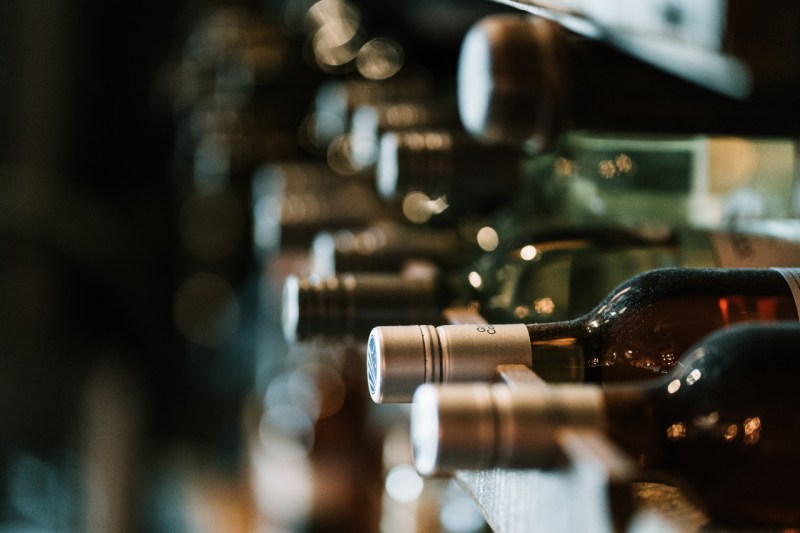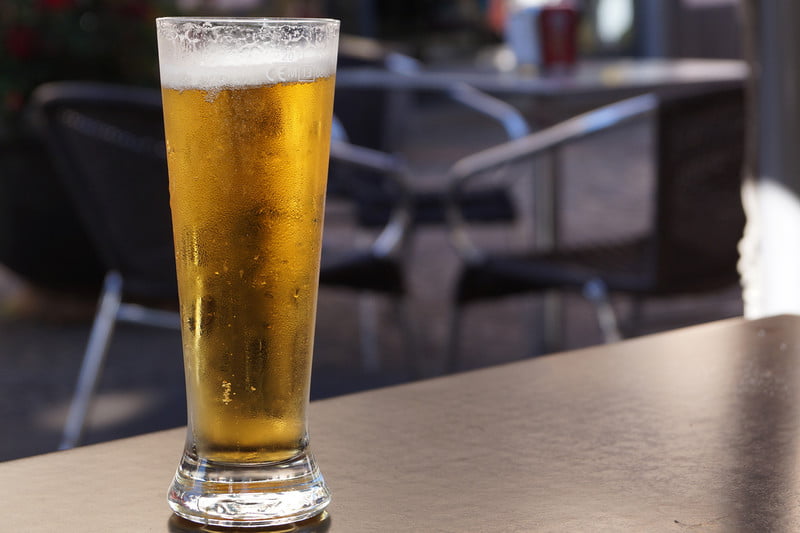The supply chain bottleneck has become much more than an inconvenience. Entire industries are reeling from the massive ripple effects, including just about every layer of the drinks realm.
Some of it is even comical. You know, the tales of Champagne being rush delivered to the Hamptons by way of helicopter amid a reported shortage. But it’s become a big deal, challenging everything from labor and equipment supplies to access to key ingredients. It’s so much more than a colossal cargo ship stuck in the Suez Canal. The slumping global economy of the last year-and-a-half has simply pumped the breaks on a lot of things we always just assumed would be there.
“Related
- The 8 Best Champagnes Under $100
- 22 Easy Cocktail Recipes That You Can Make at Home
- The Best Alcohol Delivery Services to Help You Drink at Home
Mary Bartlett is the co-founder of Future Gin. Because all of her ingredients are sourced domestically, the brand has fared pretty well. “The biggest problem has been sourcing glass bottles,” Bartlett says. “There’s a glass shortage everywhere but to compound that, a lot of brands that sourced their bottles internationally before the pandemic have had to move to domestic glass so there’s just not enough for all of us. We’ve had to push back a couple of production runs while we looked for bottles and for one run, had to substitute a different bottle.”

Brett Dunne is the managing director of Lucas Bols, an international spirits company. He covers the U.S. and Canada, specifically, but because they import goods from all over, it’s a truly global enterprise. Dunne is proud of how his team has pivoted but cannot believe the cost of freight these days. He says in the last year alone, the cost of ocean freight from Europe to the U.S. has more than doubled.
“The real problem can be traced back to one thing—manpower,” he says. “The entire supply chain is stressed like never before because there simply are not enough people to produce raw materials, move those materials from point A to B, and there is a lack of that same manpower to move finished goods through the supply chain.”
It’s a mean combo of heightened shipping costs, escalated prices for goods, and not enough bodies to keep things rolling. The lag time now is astonishing, as Dunne describes it, and he thinks it will likely get worse before it starts to improve. “Where it took five to six weeks to get a container from Europe into our warehouse prior to COVID, it now takes ten to twelve weeks,” he says. “Moving goods from our domestic warehouse in Louisville to our distributors used to take three to five days. Now we sometimes wait two to three weeks just for a truck to be available to pick up the goods. So, pre-COVID from Europe to our distributors could be six to eight weeks, now it’s four to five months!”
Ivan Vasquez is the owner of Madre Oaxacan Restaurant & Mezcaleria in southern California. He looks after three locations and depends heavily on imported goods from south of the border. He says he’s routinely out of beer, even the major brands like Pacifico, something he’s never experienced before. “The brands and owners of the beer companies are saying that this is caused by issues at the border, distributors not having enough workers at the warehouse, and a lack of drivers,” Vasquez says.

He says up to half of his beer menu, one that relies on artisanal Mexican selections, has been out of stock multiple times. It’s tricky for mezcal, too, as the glass shortage has affected producers and many have had to delay orders to the U.S. There’s yet another wrinkle: Vasquez says that even if the goods he needs do make it across the border, short-staffed companies and inexperienced workers may not get it into his hands. “Some of our exclusive mezcals were being sent to other accounts because some of the distributors are facing this labor shortage and they have inexperienced workers or just no employees at all,” he says.
About that Champagne shortage? It’s complicated. According to the Champagne Bureau, the volume of the prized bubbles exported to the states actually declined about 20% in 2020, mainly because of the pandemic and people spending less frivolously (a similar decline occurred in the wake of the 2008 financial crisis). What’s more to blame recently is the weather. There have been frost and fires, all in one growing season, and Champagne is likely to produce its lowest yield in four decades. Some estimate that in the end, the year’s crop will have taken a colossal 60% hit.
That’s bad timing, as some economies begin to rebound and people start spending big on wine again (and looking for an excuse to celebrate). Fortunately, as we’ve reported many times before, there are other sparkling wines out there that are just about as good and sometimes better. Back home, the domestic wine scene fared better this year, but there were widespread reports of labor shortages around harvest, especially along the west coast. Luckily, the wildfire pressure in 2021 was lighter and therefore easier on the grapes.
All in all, we’re still in it and patience and ingenuity will get us out of it. In the meantime, tip your bartender well, treat your bottle shop to some business, and don’t expect to have quite the sea of drinks options you normally have—not just yet, anyway.


